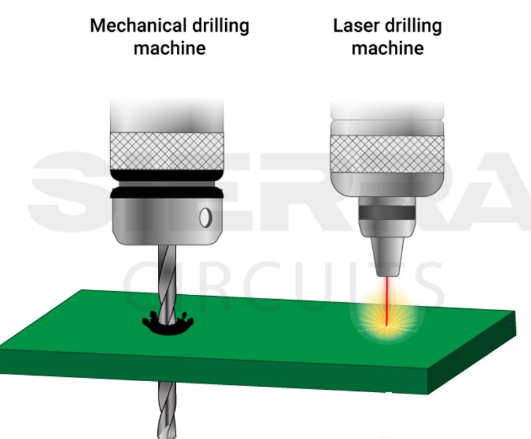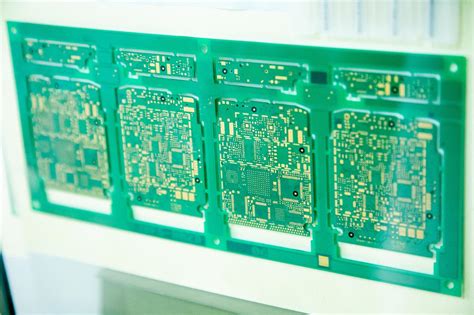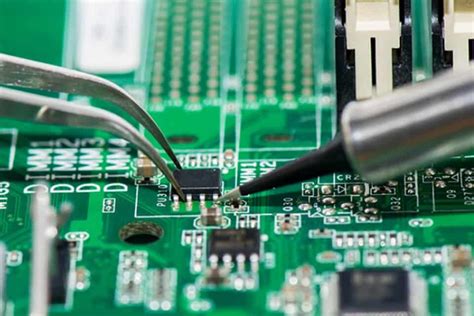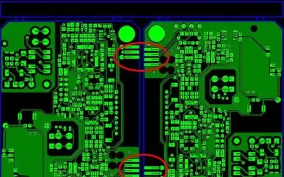High speed pcb drilling
Advances In High Speed PCB Drilling Technology
The field of printed circuit board (PCB) manufacturing has witnessed significant advancements over the years, particularly in the realm of high-speed PCB drilling technology. This evolution is driven by the increasing demand for miniaturized electronic devices, which necessitate more precise and efficient drilling processes. High-speed PCB drilling technology has become a cornerstone in the production of modern electronics, enabling manufacturers to meet the stringent requirements of today’s market.
One of the primary advancements in high-speed PCB drilling technology is the development of more sophisticated drilling machines.
These machines are equipped with advanced spindle motors that can achieve rotational speeds exceeding 300,000 revolutions per minute (RPM). Such high speeds are crucial for drilling microvias, which are tiny holes that connect different layers of a PCB. The ability to drill these microvias with high precision and speed significantly enhances the overall performance and reliability of the PCB.
In addition to improved spindle motors, the integration of laser drilling technology has revolutionized high-speed PCB drilling.
Laser drilling offers unparalleled precision, allowing for the creation of extremely small and accurately positioned holes. This technology is particularly beneficial for drilling through high-density interconnect (HDI) PCBs, which are commonly used in smartphones, tablets, and other compact electronic devices. The use of lasers not only increases the speed of the drilling process but also reduces the wear and tear on mechanical drill bits, thereby extending their lifespan and reducing maintenance costs.
Another significant advancement is the implementation of automated drilling systems.
These systems leverage computer numerical control (CNC) technology to automate the drilling process, ensuring consistent quality and reducing the likelihood of human error. Automated drilling systems can handle complex drilling patterns with ease, making them ideal for mass production. Furthermore, the integration of real-time monitoring and feedback mechanisms allows for immediate adjustments, ensuring optimal drilling conditions and minimizing defects.
The materials used in PCB manufacturing have also evolved, contributing to the advancements in high-speed drilling technology.
Modern PCBs are often made from high-performance materials such as FR-4, a composite material composed of woven fiberglass cloth with an epoxy resin binder. These materials offer excellent mechanical strength and thermal stability, which are essential for withstanding the high speeds and temperatures associated with advanced drilling techniques. Additionally, the development of specialized drill bits made from materials like tungsten carbide has further enhanced the efficiency and precision of the drilling process.
Moreover, advancements in software have played a crucial role in optimizing high-speed PCB drilling.
Advanced design software allows engineers to create highly detailed and accurate PCB layouts, which can be directly fed into automated drilling machines. This seamless integration between design and manufacturing ensures that the final product meets the exact specifications required. Additionally, simulation software enables engineers to predict and mitigate potential issues before the actual drilling process begins, thereby reducing the risk of costly errors and rework.
In conclusion, the advancements in high-speed PCB drilling technology have significantly transformed the landscape of PCB manufacturing. The development of sophisticated drilling machines, the integration of laser technology, the implementation of automated systems, the evolution of materials, and the optimization through advanced software have collectively contributed to more efficient, precise, and reliable PCB production. As the demand for smaller and more powerful electronic devices continues to grow, these technological advancements will undoubtedly play a pivotal role in meeting the challenges of modern electronics manufacturing.

Benefits Of High Speed PCB Drilling For Modern Electronics
High-speed PCB drilling has become an indispensable aspect of modern electronics manufacturing, offering a multitude of benefits that significantly enhance the efficiency and quality of printed circuit boards (PCBs). As the demand for more compact, reliable, and high-performance electronic devices continues to grow, the need for advanced manufacturing techniques becomes increasingly critical. High-speed PCB drilling addresses these needs by providing a range of advantages that contribute to the overall improvement of electronic products.
One of the primary benefits of high-speed PCB drilling is the substantial reduction in production time.
Traditional drilling methods can be time-consuming, especially when dealing with complex PCB designs that require numerous holes of varying sizes. High-speed drilling machines, equipped with advanced spindle motors and precision control systems, can operate at significantly higher speeds, thereby accelerating the drilling process. This increased speed not only shortens the production cycle but also allows manufacturers to meet tight deadlines and respond more swiftly to market demands.
In addition to time savings, high-speed PCB drilling enhances the precision and accuracy of hole placement.
Modern electronic devices often feature densely packed components and intricate circuitry, necessitating extremely precise drilling to ensure proper functionality. High-speed drilling equipment utilizes sophisticated software and control mechanisms to achieve micron-level accuracy, minimizing the risk of misalignment and defects. This precision is crucial for maintaining the integrity of the PCB and ensuring reliable performance in the final product.
Furthermore, high-speed PCB drilling contributes to improved hole quality, which is essential for the overall reliability and durability of electronic devices.
The high rotational speeds and advanced cutting tools used in high-speed drilling produce cleaner, more consistent holes with smoother walls. This superior hole quality reduces the likelihood of issues such as burr formation, delamination, and thermal damage, which can compromise the electrical and mechanical properties of the PCB. As a result, electronic devices manufactured using high-speed drilling techniques exhibit enhanced performance and longevity.
Another significant advantage of high-speed PCB drilling is its ability to accommodate a wide range of materials and board thicknesses.
Modern PCBs are often constructed from advanced materials such as high-frequency laminates, flexible substrates, and multi-layer composites, each presenting unique drilling challenges. High-speed drilling machines are designed to handle these diverse materials with ease, ensuring precise and efficient hole formation regardless of the board’s composition. This versatility allows manufacturers to produce a broader array of electronic products, catering to various applications and industries.
Moreover, high-speed PCB drilling supports the trend towards miniaturization in electronics.
As devices become smaller and more compact, the need for finer pitch drilling and smaller hole diameters becomes increasingly important. High-speed drilling equipment is capable of producing microvias and other minute features with exceptional accuracy, enabling the development of ultra-compact PCBs that meet the stringent requirements of modern electronic devices. This capability is particularly valuable in industries such as telecommunications, medical devices, and consumer electronics, where space constraints and high performance are paramount.
In conclusion, high-speed PCB drilling offers a host of benefits that are crucial for the advancement of modern electronics. By significantly reducing production time, enhancing precision and accuracy, improving hole quality, accommodating diverse materials, and supporting miniaturization, high-speed drilling techniques play a vital role in the manufacturing of high-performance, reliable electronic devices. As technology continues to evolve, the importance of high-speed PCB drilling in meeting the demands of the electronics industry will only continue to grow, solidifying its position as a key enabler of innovation and progress.

Challenges And Solutions In High Speed PCB Drilling
High-speed PCB drilling is a critical process in the manufacturing of printed circuit boards, which are essential components in virtually all electronic devices. The demand for smaller, more complex, and higher-performing electronic devices has driven the need for more precise and efficient PCB drilling techniques. However, this advancement is not without its challenges. The process of high-speed PCB drilling presents several technical and operational difficulties that manufacturers must address to ensure the quality and reliability of the final product.
One of the primary challenges in high-speed PCB drilling is maintaining precision and accuracy.
As the speed of drilling increases, so does the potential for errors. High-speed drills can easily deviate from their intended path, leading to misaligned holes that can compromise the functionality of the PCB. To mitigate this issue, manufacturers employ advanced computer numerical control (CNC) machines that offer greater precision and control. These machines are equipped with sophisticated software that can adjust the drilling parameters in real-time, ensuring that each hole is drilled with the utmost accuracy.
Another significant challenge is the wear and tear on drilling tools.
High-speed drilling generates a considerable amount of heat and friction, which can quickly degrade the drill bits. This not only affects the quality of the holes but also increases the frequency of tool replacements, leading to higher operational costs. To address this, manufacturers use drill bits made from advanced materials such as tungsten carbide, which offer greater durability and heat resistance. Additionally, implementing proper cooling systems can help dissipate the heat generated during drilling, thereby extending the life of the drill bits.
The issue of debris management also poses a challenge in high-speed PCB drilling.
The rapid drilling process produces a large amount of debris, which can obstruct the drill bit and affect the quality of the holes. Effective debris removal systems are essential to ensure a clean drilling environment. Vacuum systems are commonly used to extract debris from the drilling area, while air blowers can help clear away any remaining particles. These systems must be carefully calibrated to work in tandem with the high-speed drills, ensuring that debris is efficiently removed without disrupting the drilling process.
Moreover, the increasing complexity of PCB designs adds another layer of difficulty to high-speed drilling.
Modern PCBs often feature multiple layers and intricate patterns, requiring precise drilling at various depths. This necessitates the use of multi-spindle drilling machines, which can simultaneously drill multiple holes at different depths. These machines must be meticulously programmed to handle the complex drilling patterns, ensuring that each hole is accurately placed and aligned.
In addition to these technical challenges, manufacturers must also consider the environmental impact of high-speed PCB drilling.
The process consumes a significant amount of energy and generates waste materials, which can have adverse effects on the environment. To address this, manufacturers are adopting more sustainable practices, such as using energy-efficient machines and recycling waste materials. These efforts not only help reduce the environmental footprint of PCB manufacturing but also contribute to cost savings in the long run.
In conclusion, high-speed PCB drilling is a complex process that presents several challenges, including maintaining precision, managing tool wear, handling debris, accommodating complex designs, and addressing environmental concerns. However, with the use of advanced technologies and sustainable practices, manufacturers can overcome these challenges and produce high-quality PCBs that meet the demands of modern electronic devices. By continuously innovating and improving their processes, they can ensure the reliability and performance of their products, ultimately contributing to the advancement of the electronics industry.

Future Trends In High Speed PCB Drilling Techniques
The future of high-speed PCB drilling techniques is poised for significant advancements, driven by the relentless demand for more efficient, precise, and cost-effective manufacturing processes. As the electronics industry continues to evolve, the need for smaller, more complex, and densely packed printed circuit boards (PCBs) has become paramount. This evolution necessitates the development of innovative drilling technologies that can keep pace with these requirements.
One of the most promising trends in high-speed PCB drilling is the integration of laser drilling technology.
Unlike traditional mechanical drilling, laser drilling offers unparalleled precision and speed, making it ideal for creating microvias and other intricate features on modern PCBs. The use of ultraviolet (UV) lasers, in particular, has shown great potential due to their ability to produce clean, high-quality holes with minimal thermal impact on the surrounding material. This results in fewer defects and higher overall reliability of the finished product.
In addition to laser drilling, advancements in automation and machine learning are set to revolutionize the PCB drilling process.
Automated drilling systems equipped with advanced sensors and real-time monitoring capabilities can significantly reduce human error and increase production efficiency. Machine learning algorithms can analyze vast amounts of data to optimize drilling parameters, predict potential issues, and suggest corrective actions. This not only enhances the accuracy and speed of the drilling process but also extends the lifespan of drilling equipment by minimizing wear and tear.
Moreover, the development of new materials and coatings for drill bits is another area of focus.
High-performance materials such as polycrystalline diamond (PCD) and cubic boron nitride (CBN) are being explored for their exceptional hardness and wear resistance. These materials can withstand the rigors of high-speed drilling, resulting in longer tool life and reduced downtime for tool changes. Additionally, advanced coatings such as diamond-like carbon (DLC) and titanium aluminum nitride (TiAlN) can further enhance the durability and performance of drill bits, enabling them to maintain their sharpness and cutting efficiency over extended periods.
Furthermore, the adoption of multi-spindle drilling machines is gaining traction in the industry.
These machines, capable of simultaneously drilling multiple holes, can drastically reduce cycle times and increase throughput. By leveraging synchronized motion control and precise positioning systems, multi-spindle machines ensure consistent hole quality and alignment, even at high speeds. This approach not only boosts productivity but also allows manufacturers to meet the growing demand for high-density interconnect (HDI) PCBs used in advanced electronic devices.
Another noteworthy trend is the implementation of environmentally friendly practices in PCB drilling.
As sustainability becomes a critical consideration, manufacturers are exploring ways to minimize waste and reduce energy consumption. For instance, the use of water-based coolants and lubricants can help dissipate heat more effectively during the drilling process, reducing the risk of thermal damage to the PCB and lowering overall energy usage. Additionally, recycling and reusing drill bits and other consumables can contribute to a more sustainable manufacturing process.
In conclusion, the future of high-speed PCB drilling techniques is marked by a convergence of cutting-edge technologies and innovative practices. Laser drilling, automation, advanced materials, multi-spindle machines, and sustainable approaches are all set to play pivotal roles in shaping the next generation of PCB manufacturing. As these trends continue to develop, they promise to deliver higher precision, greater efficiency, and enhanced reliability, ultimately driving the electronics industry towards new heights of performance and innovation.






